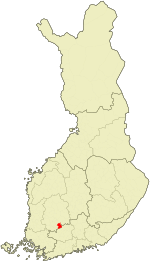Hi everyone!
We are here to
talk a little bit about Project Based Learning (PBL)! Last week Irma Kunnari
(Principal Lecturer, Teacher Educator and Pedagogical Developer in HAMK, School
of Professional Teacher Education) divided us in small groups and asked us to make
a picture about what is PBL for us (see the figure below). These were the first
step to start this issue with us (Brazilian Teacher´s in VET 3 program Cohort
Spring - 2016), and the main objective of that activity was to assess our prior
Knowledge about PBL.
Figure 1 - PBL
(prior Knowledge)
These Picute
were made by Alexandre D´Andrea and me, and I will briefly describe it right
now. The PBL starts with a real problem that need to be solved. So the Students,
the Teacher and the Stakeholders need to work in a collaborative way. First,
they need to think about the problem and make questions about it. After that,
in a dynamic way they need to use the Tools (Research, Devices, Techniques,...)
and Resources (Financial, Equipments, Staff ...) to find the
Solution.
This solution
can be an Answer, a Product or a Process and based on these results, new
questions, new tasks and new hypothesis can arise and other real problems can
be assessed by Project Based Learning.
***
At this weekend
(23/04/2016 and 24/04/2016) Alexandre and I started to produce one short video
to present the picture above and to show a little bit more about what we’ve
seen about PBL in Valkeakoski Campus. To the readers that don’t know anything
about Valkeakoski, let´s present it appropriately:
In the Valkeakoski
Campus we visited three different institutions:
Valkeakoski High School, Valkeakoski Vocational College and HAMK University of
Applied Sciences. These three institutions work together in a large, cohesive
Campus area.
You can watch
your vídeo below:
***
Another task related to PBL I made in the last week with my Homegroup
(Antônio dos Santos Jr, Conceição de Maria Cardoso Costa, Leonardo Emanuel de
Oliveira Costa, Rita Rovai Castellan, Rodrigo Alves e Rodrigo Rossi) was one
small presentation about PBL. In this presentation
a question arose: What must have a project to be considered an instance of PBL?
Based on Thomas
(2000) we can say that a Project to be considered a PBL must have the
following points:
1. PBL projects
are central, not peripherical to the curriculum.
2. PBL projects
are focused on questions or problems that "drive" students to
encounter (and struggle with) the central concepts and principles of a
discipline.
3. Projects
involve students in a constructive investigation.
4. Projects are
student-driven to some significant degree.
5. Projects are
realistic, not school-like.
(Thomas, J.W.
(2000). A REVIEW OF RESEARCH ON PROJECT-BASED LEARNING. )
To learn more about PBL, you can also access these links below:
We also separated another videos:
Resumo (Em português)
Conhecemos um pouco mais sobre o Aprendizado Baseado em Projetos (PBL)
nestas três semanas aqui em Hämeenlinna. A primeira tarefa que fizemos em
pequenos grupos foi montar uma figura que mostrasse nosso conhecimento a priori
do tema. Esta tarefa eu realizei com Alexandre D´Andrea do IFPB. Num segundo
momento com a minha família (Homegroup) aqui em Hämeenlinna realizamos uma
pequena apresentação sobre PBL e durante este trabalho uma pergunta
surgiu: O que um projeto deve para ser considerado um PBL? Depois disto,
tivemos a oportunidade de fazer uma visita no Campus de Valkeakoski (uma cidade
no sul da Finlândia). Estão presentes neste Campus três intituições que
trabalham de forma integrada: Valkeakoski High School, Valkeakoski Vocational
College and HAMK University of Applied Sciences. A ultima tarefa realizada
neste final de semana relacionada com PBL foi a confecção de um vídeo de 2-3
minutos sobre a figura de nosso conhecimento a priori e nossa visita ao Campus
Valkeakoski.



No comments:
Post a Comment